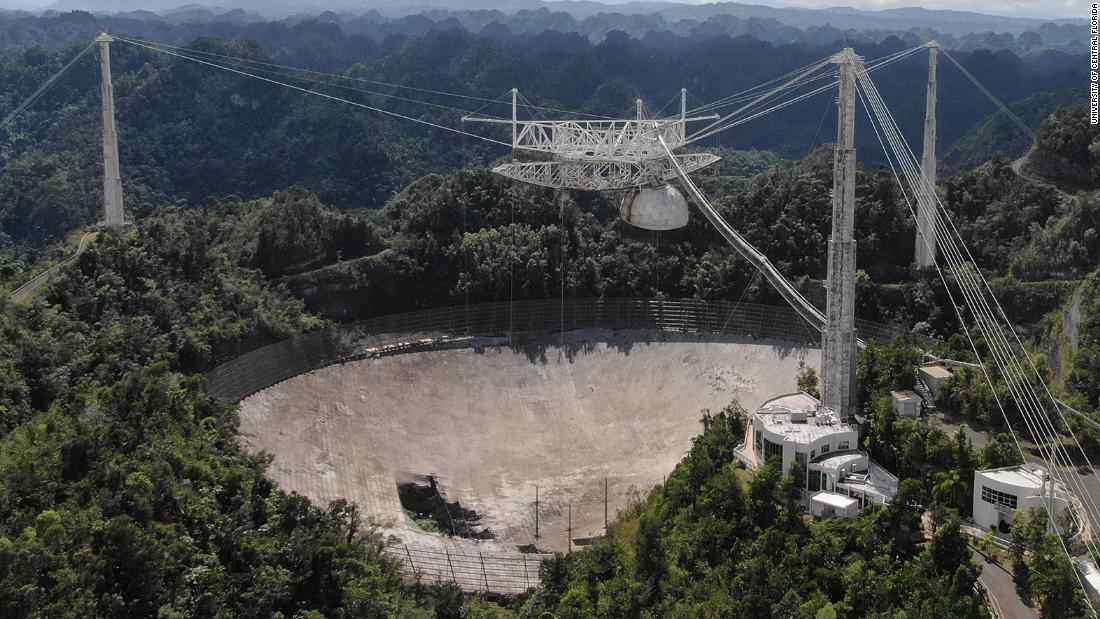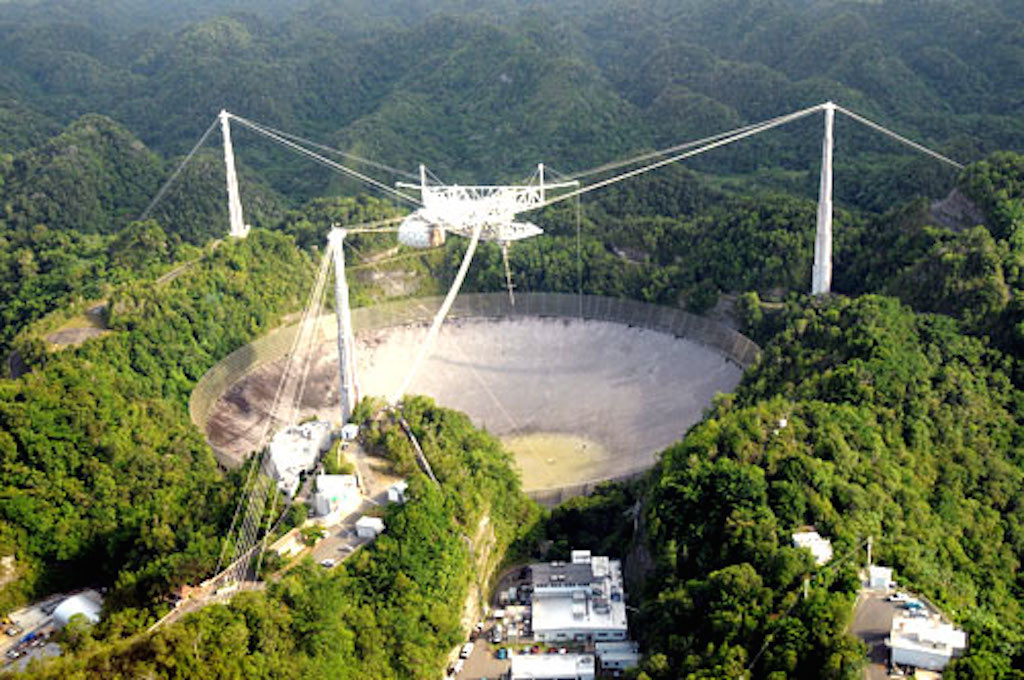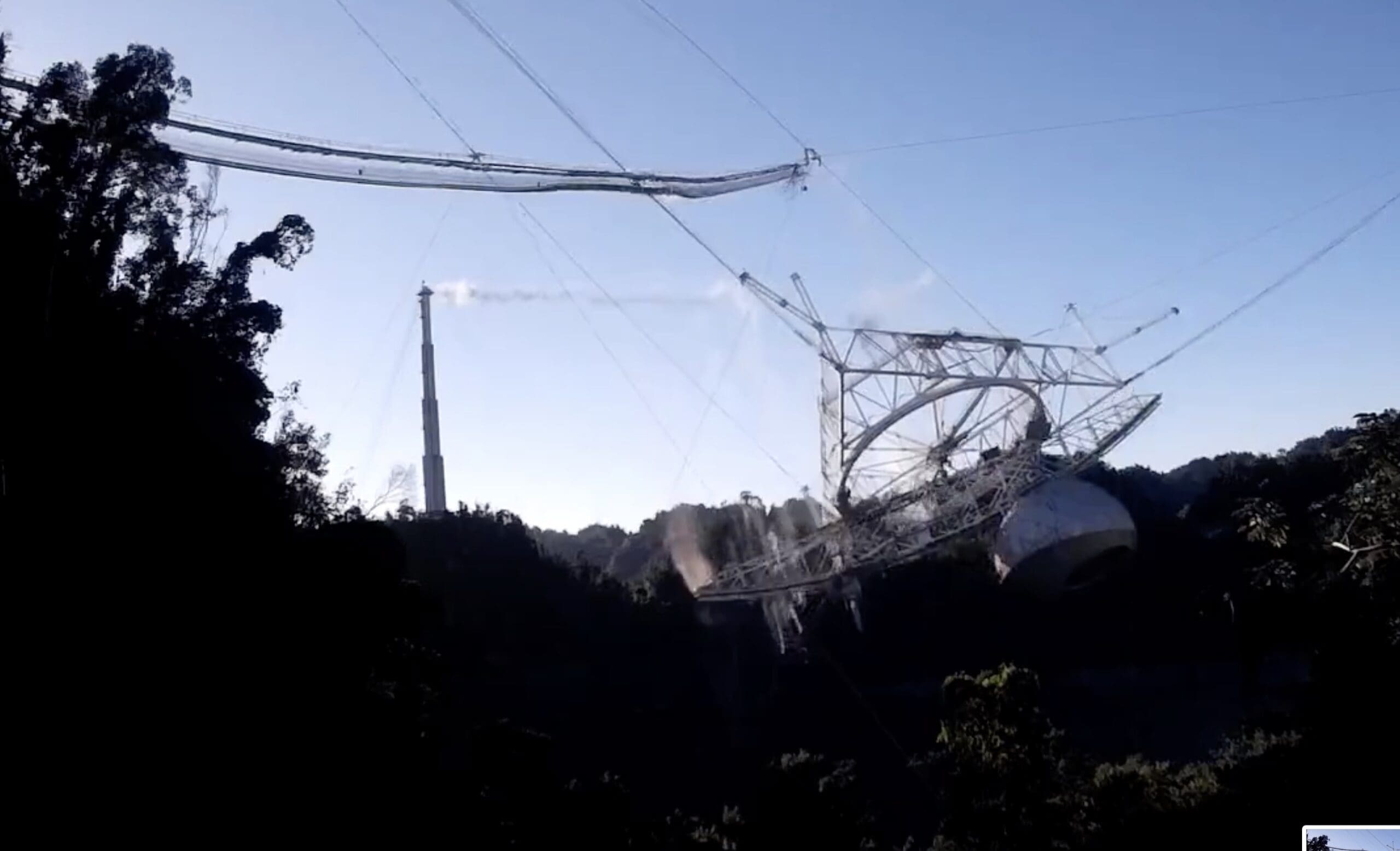
However, if safety remains a concern at the site, those other assets will be lost as well.

Other aspects of the facility, such as an atmospheric science instrument, should survive the decommissioning if handled correctly. Scientists who were planning to use the Arecibo telescope for work will be relocated to other facilities, if possible. From there, the facility served a vital role in making many breakthrough scientific discoveries. The facility was originally built in 1963 by the US Air Force under the initiative of Professor William Gordon of Cornell University. Some of the damage done to the telescopeĭecommissioning the Arecibo telescope means putting an end to nearly six decades of service. Significant damage to the cables that support the platform makes it impossible to repair without putting engineers’ lives at risk.

The biggest issue with repairing the telescope lies in the 900-ton platform that is suspended over the dish. Part of the National Science Foundation’s statement read, “Arecibo Observatory cannot be stabilized without risk to construction workers and staff at the facility.” What was revealed is that there would be no possible safe approach to repair the telescope the damage was too significant. This news comes after the telescope suffered damage from Hurricane Maria in 2017 and two snapped auxiliary cables.įollowing all of the damage, a review of what would be necessary to repair it was done. "While I am disappointed by the loss of investigative capabilities, I believe this process is a necessary step to preserve the research community's ability to use Arecibo Observatory's other assets and hopefully ensure that important work can continue at the facility," says Michael Wiltberger, head of NSF's Geospace Section, in a press release.Today the National Science Foundation announced that, sadly, the Arecibo radio telescope in Puerto Rico would soon be decommissioned. NSF recognizes its importance to Puerto Rico and to Science, so they will try to safeguard it as a research center that can be used again in the future, reports Meghan Bartels for. The whole observatory will not be shut down, though. The NSF will swiftly begin to decommission the telescope before any more dangers arise or damages take place. "She withstood powerful hurricanes, but age appears to have gotten the upper hand." "It is very sad to witness the passing of this scientific Queen," Jill Tarter, who used to search for aliens at the observatory, writes in an email to the Times. Some of its highlights include: learning that Mercury completes one rotation every 59 days, not 88 days as originally thought becoming a hotspot for research on extraterrestrial life and discovering a pair of pulsars, or super-magnetized rotation stars, orbiting the Earth, reports Dennis Overbye for the New York Times. During its reign, the powerful telescope led to discovery after discovery, challenging what scientists knew about outer space. A controlled breakdown of the telescope allows the NSF to safely lower it, reports Elie Levine for NPR.įor 53 years, Arecibo was the world's largest radio telescope until it was superseded by a 1,600-foot telescope built in China in 2016. More cables could fail at any second, which could destroy the whole dish and jeopardize the safety of people at the observatory. "A controlled decommissioning gives us the opportunity to preserve valuable assets that the observatory has."

"There is a serious risk of an unexpected and uncontrolled collapse," Ralph Gaume, the director of NSF’s astronomy division, said in an NSF telephone conference yesterday. For this reason, the National Science Foundation (NSF) announced yesterday that plans to decommission the telescope were underway. Given the age of the telescope, it would need more intensive maintenance in the future since the cables were weaker than originally thought. Teams of engineers looked for remedies to help save the telescope, but repairs would be too risky for a construction team to safely undertake, reports Ashley Strickland for CNN. Three months later, a main cable connected to that same tower snapped, causing more devastating damage. This August, an auxiliary cable slipped out of its socket, inflicting a 100-foot-long gash in the dish. In 2017, Hurricane Maria battered the already deteriorating telescope. The observatory has three towers equipped with cables that hold up the telescope's enormous, 1,000-foot reflector dish. After 57 years of gazing into the universe and helping astronomers unravel the cosmos' mysteries, the Arecibo Observatory's world-renowned telescope in Puerto Rico will be torn down, reports Alexandra Witze for Nature.


 0 kommentar(er)
0 kommentar(er)
